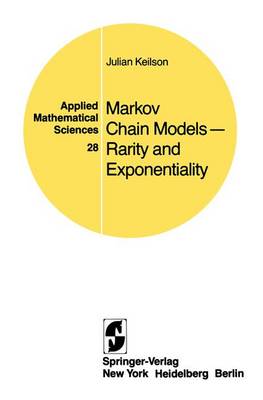in failure time distributions for systems modeled by finite chains. This introductory chapter attempts to provide an over view of the material and ideas covered. The presentation is loose and fragmentary, and should be read lightly initially. Subsequent perusal from time to time may help tie the mat erial together and provide a unity less readily obtainable otherwise. The detailed presentation begins in Chapter 1, and some readers may prefer to begin there directly. O.l. Time-Reversibility and Spectral Representation. Continuous time chains may be discussed in terms of discrete time chains by a uniformizing procedure (2.l) that simplifies and unifies the theory and enables results for discrete and continuous time to be discussed simultaneously. Thus if N(t) is any finite Markov chain in continuous time governed by transition rates vmn one may write for pet) = [Pmn(t)] * P[N(t) = n I N(O) = m] pet) = exp [-vt(I - a )] (0.1.1) v where v > Max r v ' and mn m n law ~ 1 - v-I * Hence N(t) where is governed r vmn Nk = NK(t) n K(t) is a Poisson process of rate v indep- by a ' and v dent of N * k Time-reversibility (1.3, 2.4, 2.S) is important for many reasons. A) The only broad class of tractable chains suitable for stochastic models is the time-reversible class.
- ISBN13 9780387904054
- Publish Date 23 April 1979
- Publish Status Active
- Publish Country US
- Imprint Springer-Verlag New York Inc.
- Edition Softcover reprint of the original 1st ed. 1979
- Format Paperback
- Pages 184
- Language English
